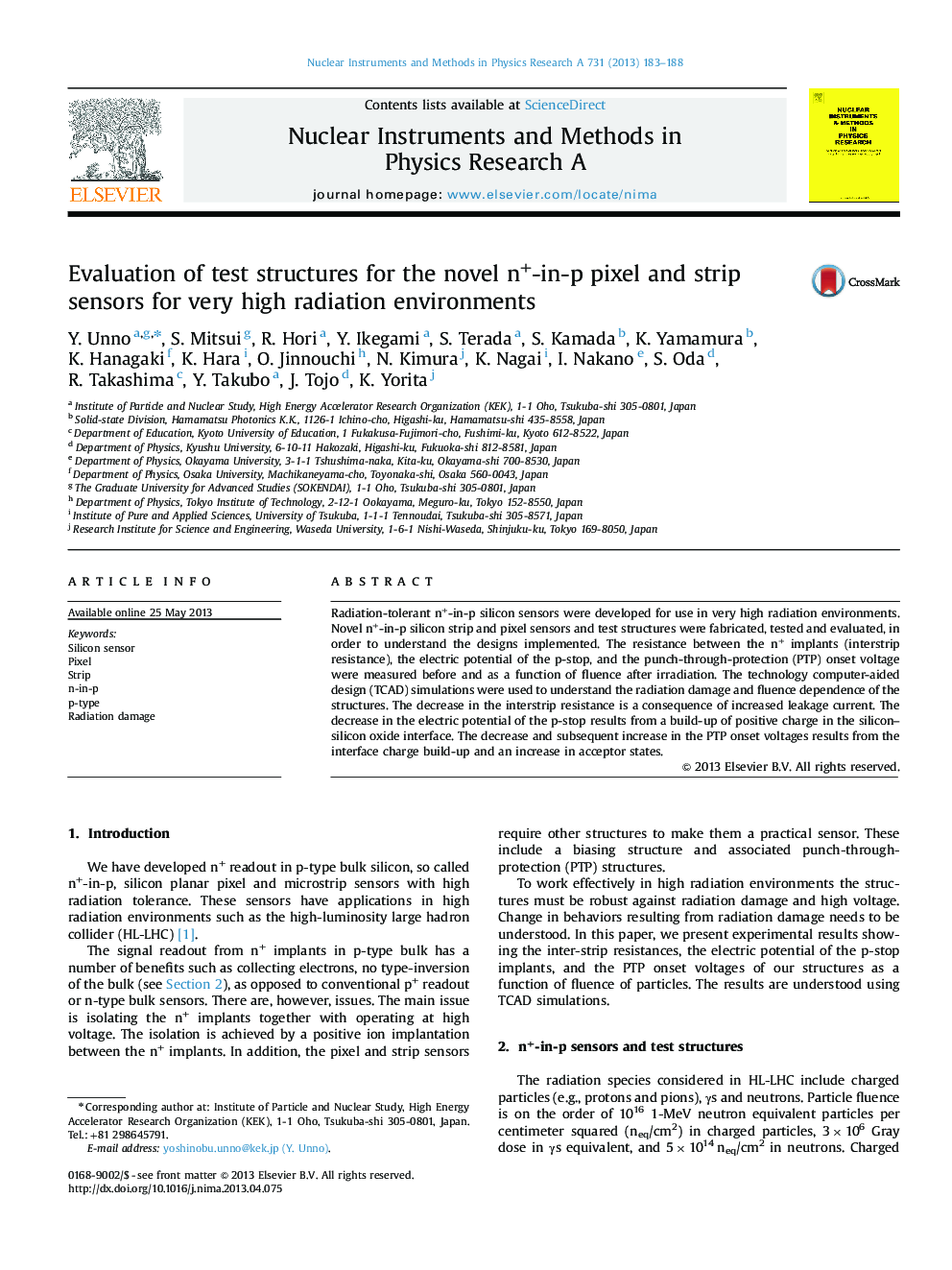| Article ID | Journal | Published Year | Pages | File Type |
|---|---|---|---|---|
| 8179068 | Nuclear Instruments and Methods in Physics Research Section A: Accelerators, Spectrometers, Detectors and Associated Equipment | 2013 | 6 Pages |
Abstract
Radiation-tolerant n+-in-p silicon sensors were developed for use in very high radiation environments. Novel n+-in-p silicon strip and pixel sensors and test structures were fabricated, tested and evaluated, in order to understand the designs implemented. The resistance between the n+ implants (interstrip resistance), the electric potential of the p-stop, and the punch-through-protection (PTP) onset voltage were measured before and as a function of fluence after irradiation. The technology computer-aided design (TCAD) simulations were used to understand the radiation damage and fluence dependence of the structures. The decrease in the interstrip resistance is a consequence of increased leakage current. The decrease in the electric potential of the p-stop results from a build-up of positive charge in the silicon-silicon oxide interface. The decrease and subsequent increase in the PTP onset voltages results from the interface charge build-up and an increase in acceptor states.
Related Topics
Physical Sciences and Engineering
Physics and Astronomy
Instrumentation
Authors
Y. Unno, S. Mitsui, R. Hori, Y. Ikegami, S. Terada, S. Kamada, K. Yamamura, K. Hanagaki, K. Hara, O. Jinnouchi, N. Kimura, K. Nagai, I. Nakano, S. Oda, R. Takashima, Y. Takubo, J. Tojo, K. Yorita,
